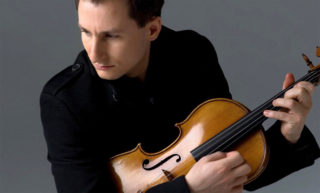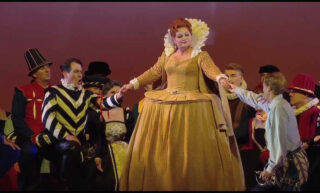On the brink of modernism
Sinfonieorchester Basel
27 and 28 February 2019
Leonidas Kavakos, violin
Erik Nielsen, conductor
Richard Wagner - Vorspiel and Liebestod from Tristan and Isolde
Wolfgang Amadeus Mozart - Concerto for violin and orchestra No. 5
Charles Ives - Symphony No. 2
Richard Wagner’s opera Tristan und Isolde recounts how the protagonists long for unification in death. As Isolde was already promised to old King Marke and Tristan had killed her former fiancé, their love was doomed.
The opera opens with the famous Tristan chord, which exemplifies the road to their dramatic death. The ambiguous chord gives the listener a sense of disorientation, of not knowing where the music – and the story – will lead. It takes the entire length of the opera, more than four hours, before the chord, just before the very end, dissolves.
Wagner (1813–1883) had a hard time finding an opera house willing to schedule the opera, and as a result, he started performing the Vorspiel (overture, prelude) as a stand-alone piece, later extended by the Liebestod (love death), the final part of the opera when Isolde is confronted with Tristan’s demise. Wagner himself never used the word Liebestod; instead he spoke of Isolde’s transfiguration.
Although some musicologists point out that others, notably Liszt, had explored similar chords before Wagner, Tristan und Isolde would have a profound influence on later composers, many of them quoting Wagner’s opera.
The Tristan chord is thus seen as the starting point of 20th-century changes in classical music. The American composer Charles Ives, one of the first modernists, indeed quotes from the opera in his 2nd symphony.
Ives (1874–1954), born and raised in New England, came from a musical family; his father was a bandleader and teacher, who also taught the young Charles. It was in fact George Ives who experimented with quartertones, thus instilling an experimental mindset into his son.
As Charles Ives himself said, the 2nd symphony is one of his “soft” works, in that it doesn’t (and didn’t) challenge the listener’s ear very much. It is indeed an early piece, composed right after he graduated from Yale University. Breaking with a tradition, Ives inserted a second slow movement (the Lento maestoso), thus creating a symphony in five movements. This too, wasn’t the very first occasion; Robert Schumann preceded him.
The symphony’s main characteristic may be its richness in quotes. Not only Wagner, but also works by Brahms, Beethoven, Bach and a whole string of American folk tunes are paraphrased. Most quotes are adjusted and hence hard to detect by the untrained ear. The patriotic song Columbia, gem of the ocean, however, is cited unchanged.
Ives became a successful entrepeneur selling insurances, meanwhile working on a considerable oeuvre of which most remained unplayed until late in his life, when he had already given up composing. Leonard Bernstein, whose hundredth birthday the Sinfonieorchester Basel celebrates this season, was one of Ives fierce advocates. In 1951, more than forty years after its inception, he premiered the 2nd Symphony in New York, where Ives lived ever since his years at Yale.
As such this concert is not only a tribute to two composers who were both early modernizers of classical music, but also to Bernstein.
These English program notes have been published in the magazine (No. 6, 2018/2019) of the Sinfonieorchester Basel.








Comments